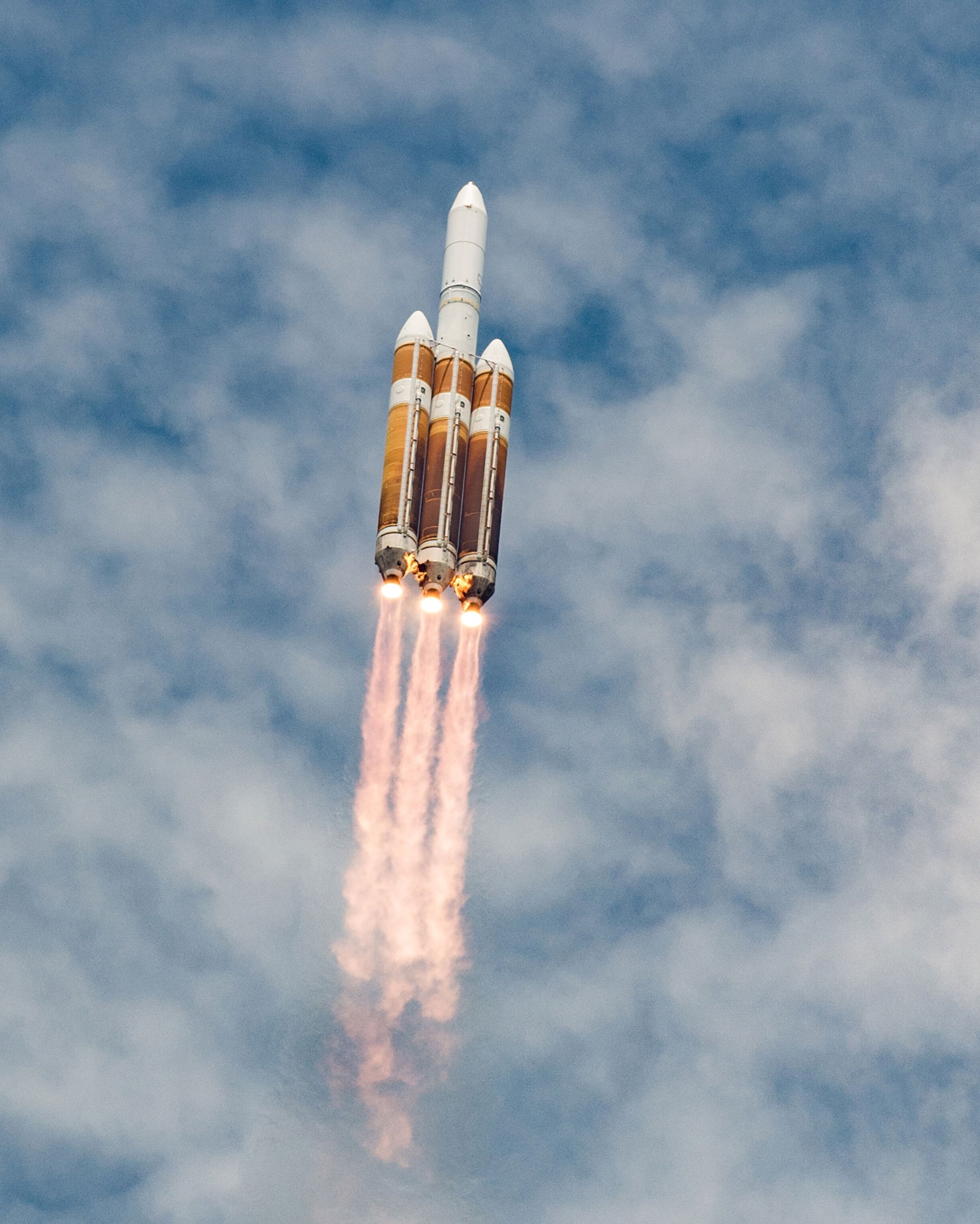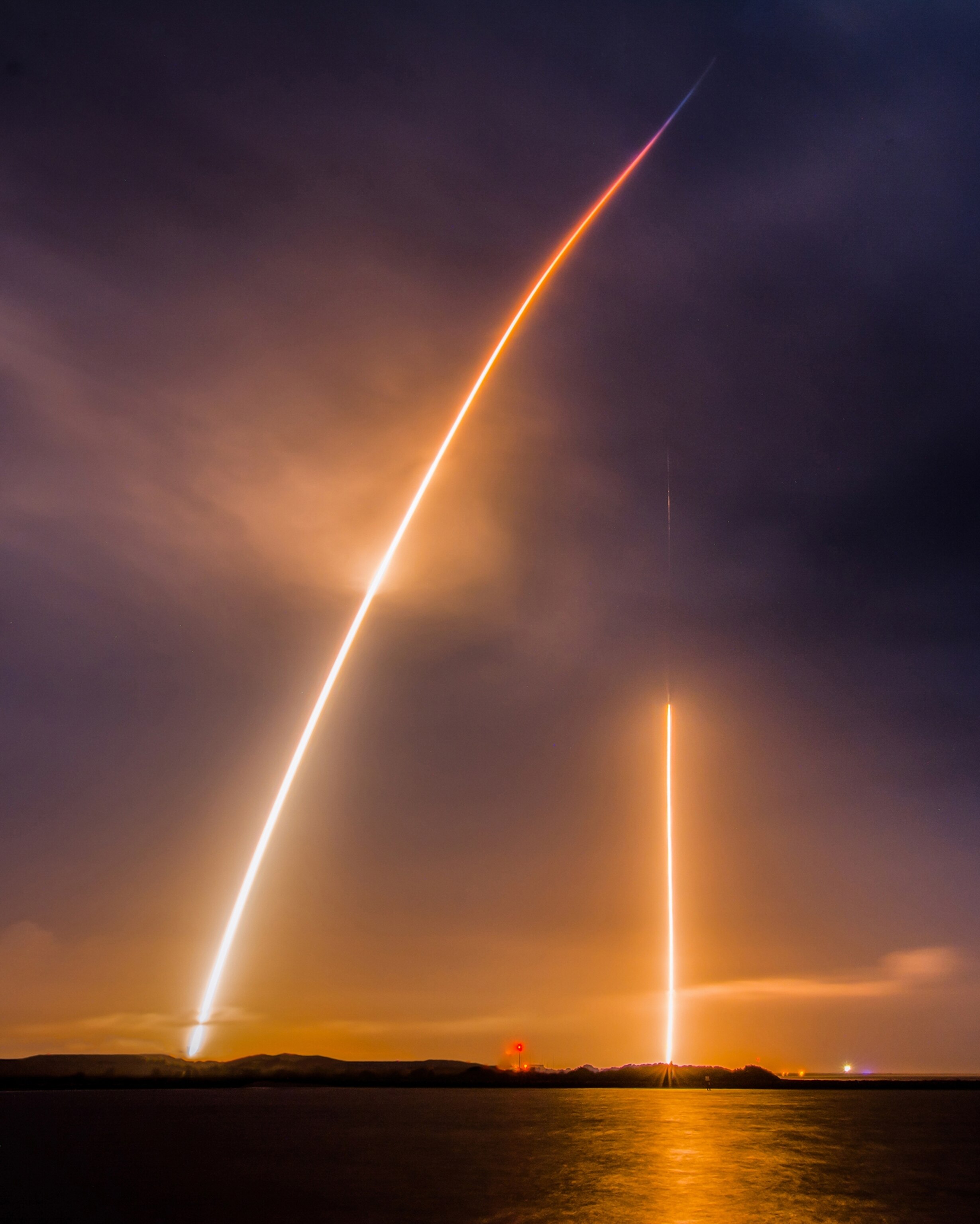
This Teenager Photographs Dramatic Rocket Launches
A 16-year-old captured images of a SpaceX launch during his summer break on Florida’s Space Coast.
Like many teenagers on summer holiday, John Kraus spent much of July 18 at a beach in Florida, getting sandy and staring at the sky. Except it was dark, after midnight, and he was working.
Kraus’s goal, starting at 12:45 a.m., was to capture the launch and landing of a SpaceX Falcon 9 rocket. It was the second time the maverick aerospace company had attempted to send a reusable rocket booster into space and set it back down on a pad at Cape Canaveral, and Kraus wanted to photograph the streaks of light drawn as the rocket hurtled into space through the warm Florida night and then fell back to Earth.

Kraus, a 16-year-old from Satellite Beach, had spent an hour driving around that day, scouting locations in his hometown and in nearby Cocoa Beach.
“If I was too far south, the launch and landing burns may have been too close together, and thus indistinguishable,” Kraus says. “However, if I was too close, my lens likely wouldn't have been wide enough to capture all of the burns.”
Eventually, he found a spot he thought would work. Later that evening, he arrived at the beach an hour ahead of the launch time and set up his Nikon D7100. His lens unfogged, he refined the focus, then waited.


It might sound like something a seasoned pro would do, but Kraus—who will be a junior at Satellite High School this fall—only picked up photography last year, “basically on a whim,” he says. He’d gotten a little bored shooting photos on his phone, so he used his leftover birthday and Christmas cash to buy a DSLR and started practicing. Living on Florida’s Space Coast means being around rockets, and Kraus found himself photographing launches not long after getting his new camera. Now, he’s one of the youngest credentialed launch photographers and covers the events for AmericaSpace.com.

This nighttime SpaceX launch would offer Kraus the chance to capture a spectacular photo of an event that could revolutionize spaceflight by making it cheaper and easier.
As the Falcon 9 lit up the sky, Kraus took three long exposures. He fiddled with them in Lightroom, then loaded them into Photoshop and layered them on top of one another. “I actually edited the photo laying on a towel on the beach and still ended up getting sandy because I couldn't see too well in the dark,” he says. “The final exposure ended at 12:53 a.m., and I had the photo processed and online just seconds before 1 a.m.”
In it, the rocket’s glowing trail pierces the clouds hovering low over the Atlantic coast, making progress in spaceflight almost tangible.

"I first saw John's photo of the Falcon rocket launch—and landing—on Twitter,” says Patrick Witty, National Geographic’s deputy director of photography for digital. “I was instantly mesmerized. It beautifully illustrates the complexity and marvel of what's happening in the sky in one single photo. When I discovered he was 16, I was more impressed."
Kraus, who doesn’t plan on making photography a profession, says he’s happy with the results. “This shot has been on my mind for a few months,” he says. “I’m very pleased with how the photo came out.”
View more of John Kraus's work on his website and follow him on Instagram.
Follow Nadia Drake on Twitter.




